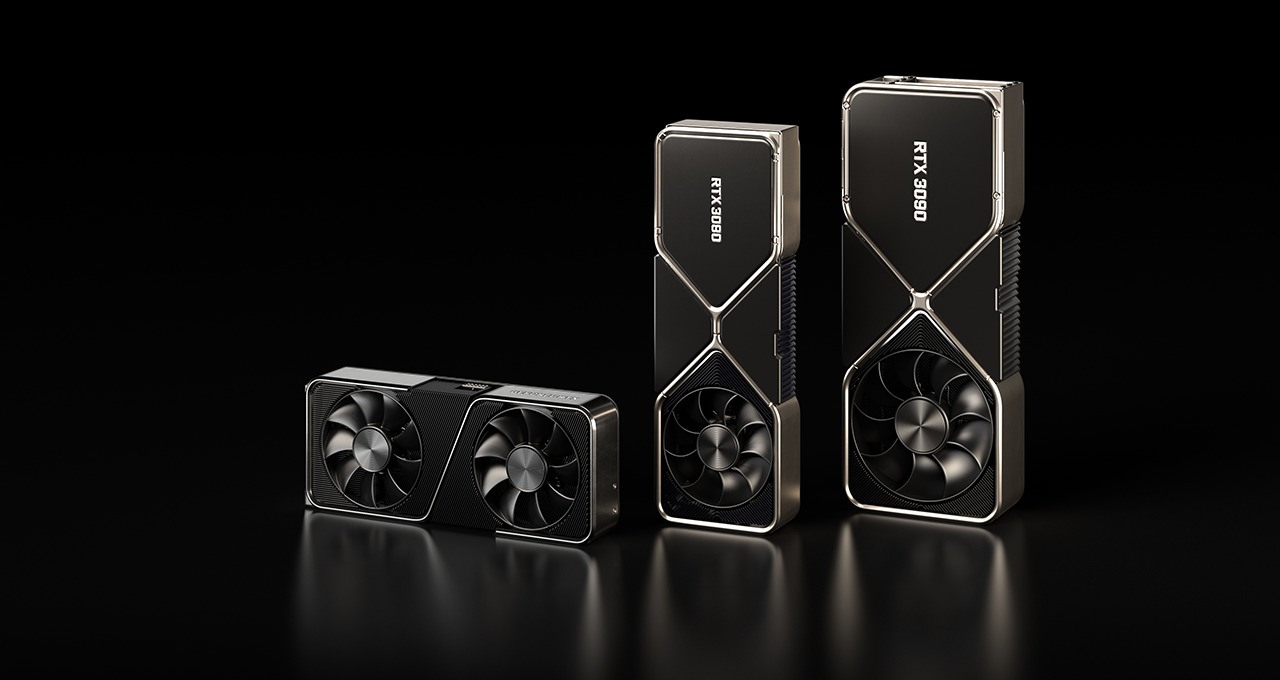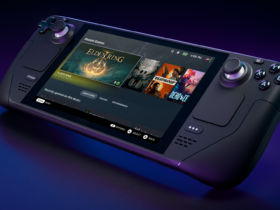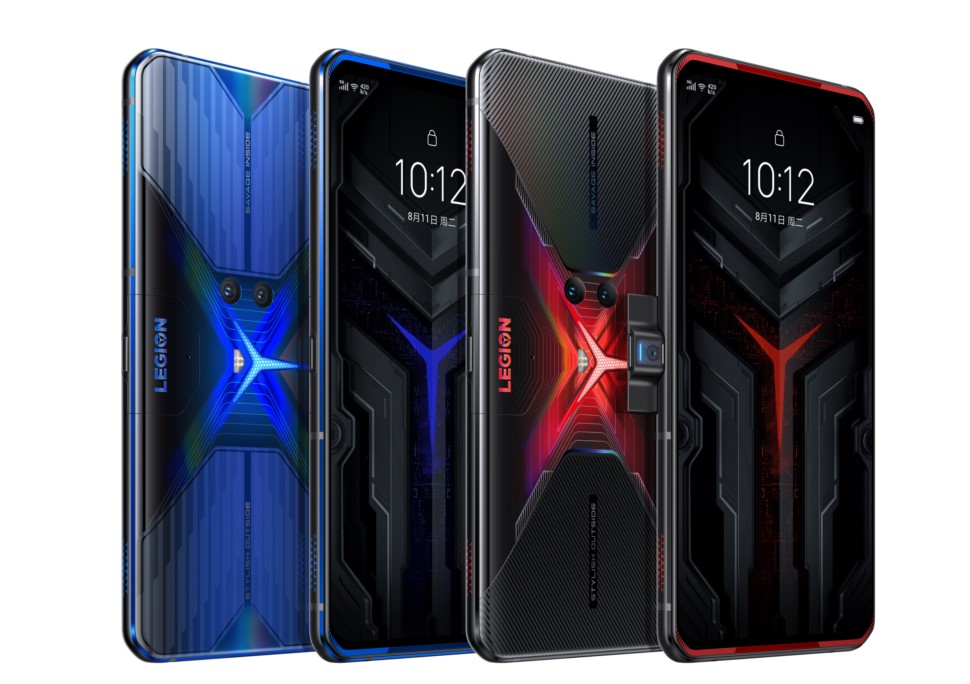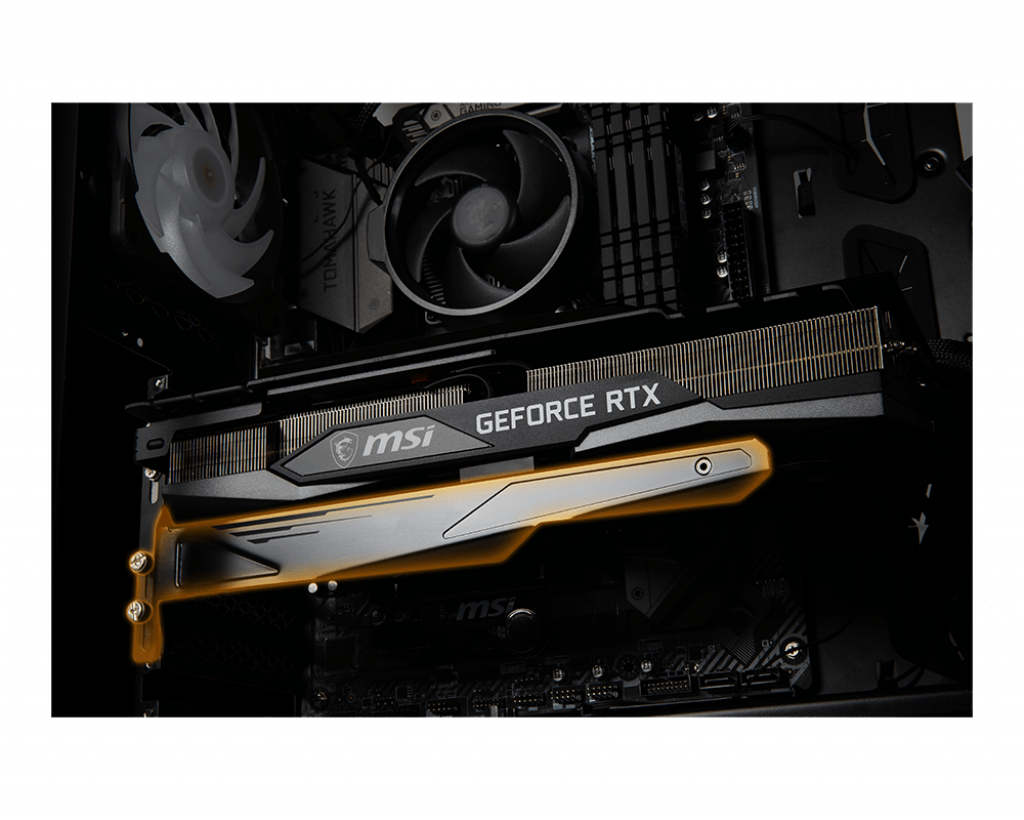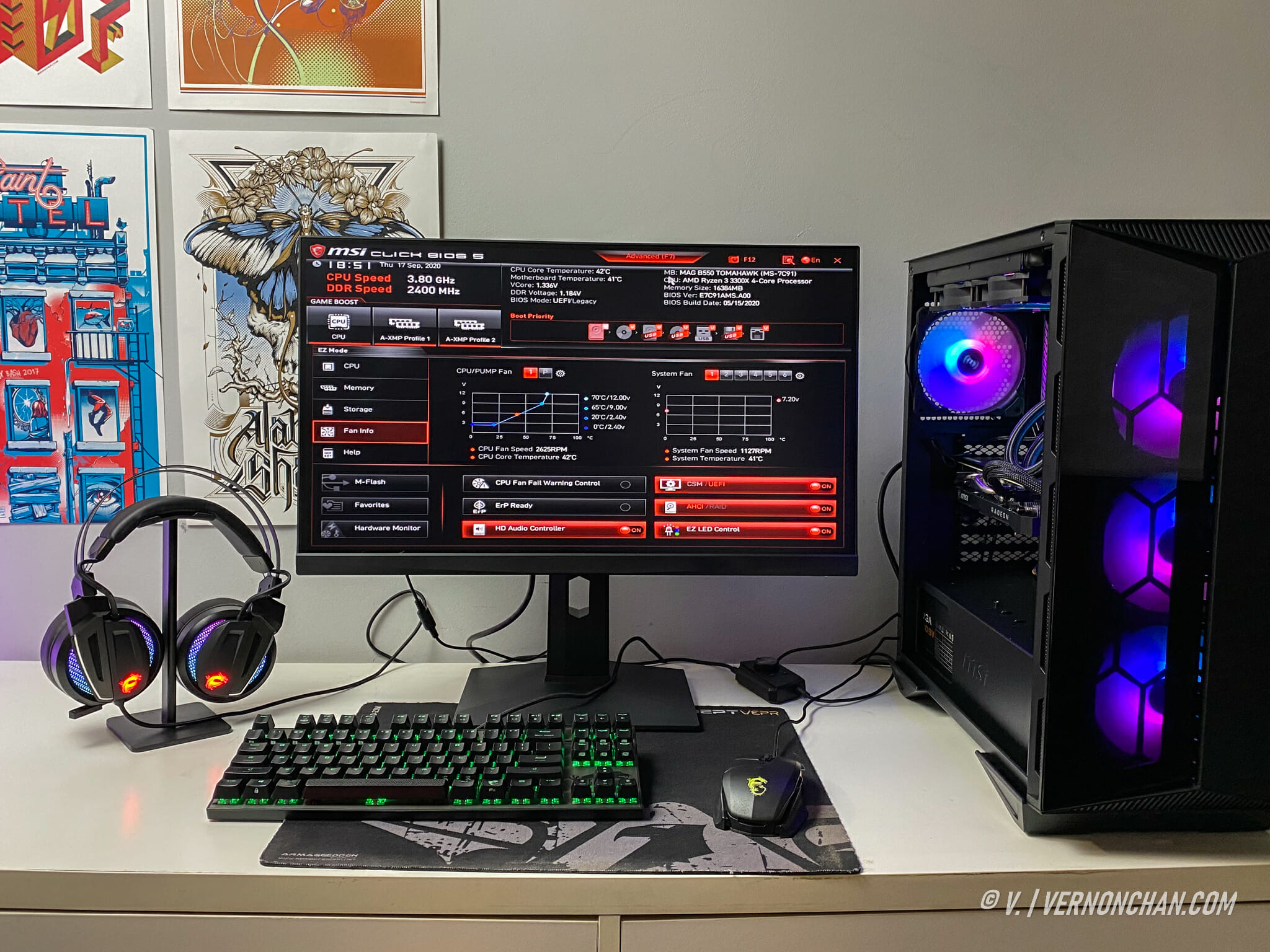Move over Turing, here comes the new generation NVIDIA GPUs, powered by NVIDIA’s new Ampere architecture. The much-anticipated GeForce RTX 30 Series graphic cards delivers what NVIDIA claims is “the greatest-ever generational leap in GeForce history.”
The new GeForce RTX 3090, 3080 and 3070 GPUs offer up to 2x the performance and 1.9x the power efficiency of the previous Turing-based generation of cards.
So, what can you expect from the new RTX 30 Series GPUs? Blistering performance, of course, especially if you play games with ray-tracing support and are looking to play at 4K resolution at a minimum of 60fps.
The new NVIDIA Ampere architecture, the second generation NVIDIA RTX architecture, delivers 3x the FP32 throughout compared to the previous generation, and 30 Shader-TFLOPS of processing power.
New dedicated RT Cores deliver up to 2x the throughput of the previous gen, as well as concurrent ray tracing and shading and compute, with 58 RT-TFLOPs of processing power.

Also, new dedicated Tensor Cores offer up to 2x the throughput of the previous generation, making it faster and more efficient to run AI-powered technologies, like NVIDIA DLSS (Deep Learning Super Sampling), and 238 Tensor-TFLOPS of processing power. DLSS offers real-time rendering and AI-assisted broadcasting features. It enables AI-based super resolution that taps into the deep learning neural network to boost frame rates while generation beautiful, high-resolution images.
Some existing gaming titles supporting DLSS include Control, Minecraft with RTX for Windows 10, and Death Stranding. Coming soon will be Boundary, Bright Memory Infinite, Call of Duty: Black Ops Cold War, Cyberpunk 2077, Fortnite, Ready or Not, Scavengers, and Watch Dogs: Legion.
Moving on, NVIDIA RTX 10 enables rapid GPU-based loading and game asset decompression—accelerating input/out performance by up to 100x compared to hard drive and traditional storage APIs. This results in improved frame rates and near-instantaneous game loading by bypassing the CPU (supporting Microsoft DirectStorage on Windows), similarly to what was demonstrated on the Sony PlayStation 5.
The new GPUs use the fastest discrete graphics memory from Micron—GDDR6X, which offers data speeds close to 1TB/s system memory bandwidth.
The RTX 30 Series uses new 8nm “8N” NVIDIA custom process from Samsung for higher transistor density and better efficiency.

GeForce RTX 3080
Replacing last year’s flagship RTX 2080 is the RTX 3080, featuring 10GB of GDDR6X memory running at 19Gbps. The new flagship GPU can consistently deliver 60fps for 4K resolution gaming. It features 8,704 CUDA cores with a base clock of 1.44GHz and 1.71GHz boost clock.
The GPU offers a single HDMI 2.1 port and 3x DisplayPort 1.4a.
It draws a maximum of 320W of power, with a 750W system power recommendation. The card requires 2x PCIe 8-pin power connectors.
Dimensions-wise, the RTX 3080 measures 285mm (11.2-inches) x 112mm (4.4-inches) and a height of two PCI slots.
For more information, visit NVIDIA’s RTX 3080 page.
GeForce RTX 3070
The successor to the original RTX 2070, the RTX 3070 is claimed to be faster than the RTX 2080 Ti at less than half the price. It is also on average 60 per cent faster than the original RTX 2070. It packs 5,888 CUDA cores and 8GB of GDDR6 memory over a 256-bit bus with a base clock of 1.5GHz (boost clock of 1.73GHz).
The GPU offers a single HDMI 2.1 port and 3x DisplayPort 1.4a.
It draws a maximum of 220W of power, with a 650W system power recommendation. The card uses a new 1x PCIe 8-pin power connector.
Dimensions-wise, the RTX 3080 measures 242mm (9.5-inches) x 112mm (4.4-inches) and a height of two PCI slots.
For more information, visit NVIDIA’s RTX 3070 page.
GeForce RTX 3090 Founders Edition
Contrary to popular belief, the RTX 3090 isn’t an “RTX 3080 Ti” but a Titan-class card. The gargantuan BFGPU (Big Ferocious GPU) occupies three slots and offers a whopping 24GB of GDDR6X memory.
Its controversial dual-axial design is claimed to be 10x quieter than the Titan RTX and keeps the GPU up to 30 degrees C cooler.
NVIDIA claims its new BFGPU is up to 50 per cent faster than the Titan RTX, enabling 8K gaming at 60fps.
The card boasts 10,496 CUDA cores, with a base clock of 1.4GHz and a boost clock frequency of 1.7GHz.
Like the RTX 3080 and 3070, it offers a single HDMI 2.1 port and 3x DisplayPort 1.4a.
Dimensions-wise, the RTX 3090 measures 313mm (12.3-inches) x 138mm (5.4-inches).
NVIDIA recommends at least a 750W power supply, with the card drawing a maximum of 350W. The card uses requires 2x PCIe 8-pin power connectors.
The RTX 3090 is the only card in the new series to support NVLink SLI.
For more information, visit NVIDIA’s GeForce RTX 3090 page.
Pricing and availability
The GeForce RTX 3080 starts at USD699 (~MYR2,897) while the RTX 3070 and RTX 3090 at USD499 (~MYR2,068) and USD1,499 (~MYR6,212), respectively.
The RTX 3080 will be available starting 17 September. The GeForce RTX 3090 will be available starting 24 September while the RTX 3070 will be available in October.ac
The RTX 30 Series GPUs will be available as custom boards from partner brands such as ASUS, Colorful, EVGA, Gainward, Galaxy, Gigabyte, Innovision 3D, MSI, Palit, PNY, and Zotac.
These GPUs will also be available in gaming systems built by Acer, Alienware, ASUS, Dell, HP, Lenovo and MSI, plus leading system builders worldwide, including CyberPower PC, Digital Storm, Falcon NW, IBUYPOWER, Maingear, Origin, NZXT, Puget and many more.
For a limited time, gamers who purchase the new GeForce RTX 30 Series GPU or system will receive a free digital download of Watch Dogs: Legion and a one-year subscription to the NVIDIA GeForce Now cloud gaming service.
Latest news
- Sony’s New WH-1000XM6: Taking Noise Cancellation to Ridiculous New Heights
- AirAsia Power Bank Policy 2025: New In-Flight Restrictions You Need to Know
- Trump Tariffs: Impact on Tech and Your Wallet in 2025
- Canon EOS R50 V: Why Content Creators Will Love This New Camera
- How to Check Unclaimed Money in Malaysia with eGUMIS (2025 Guide)
Subscribe to Vernonchan.com: Never miss a story, read stories on Feedly and Medium
Disclosure: Keep in mind that VERNONCHAN.COM may receive commissions when you click our links and make purchases. Clicking on these links cost you nothing and it helps to cover some of the costs for the upkeep of the site. While we may receive commissions, this does not impact our reviews, views and opinions which remain independent, fair, and balanced. Thank you for your support.


